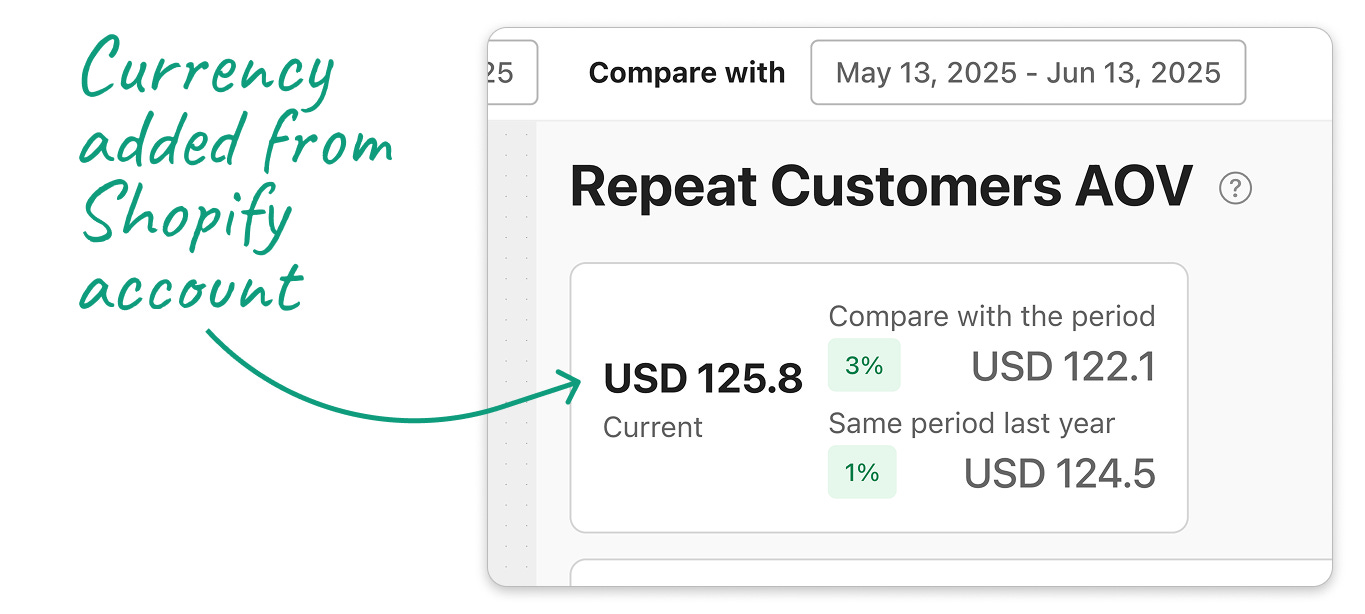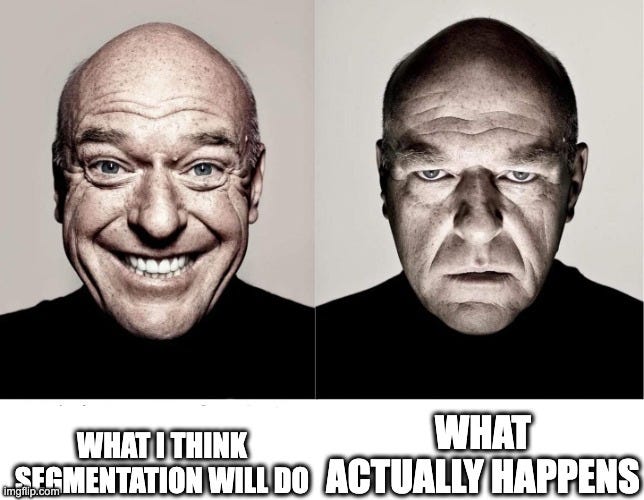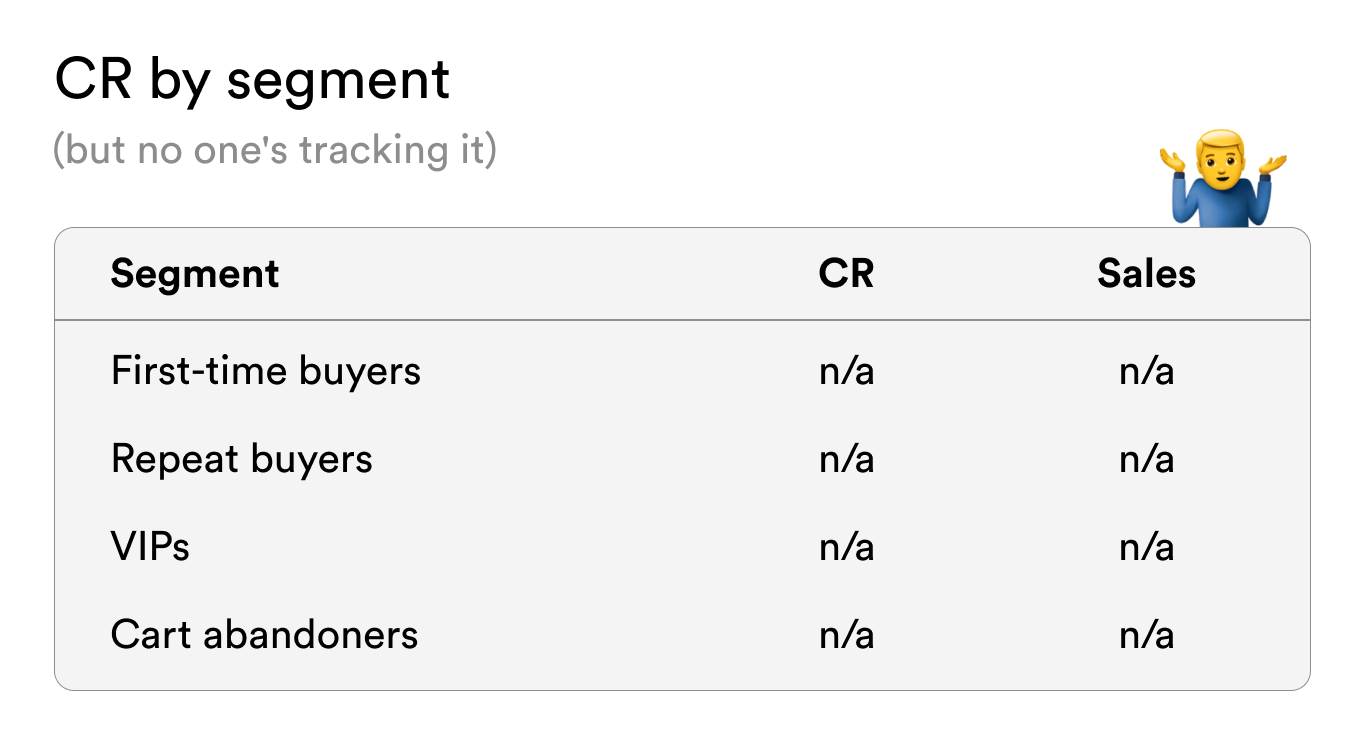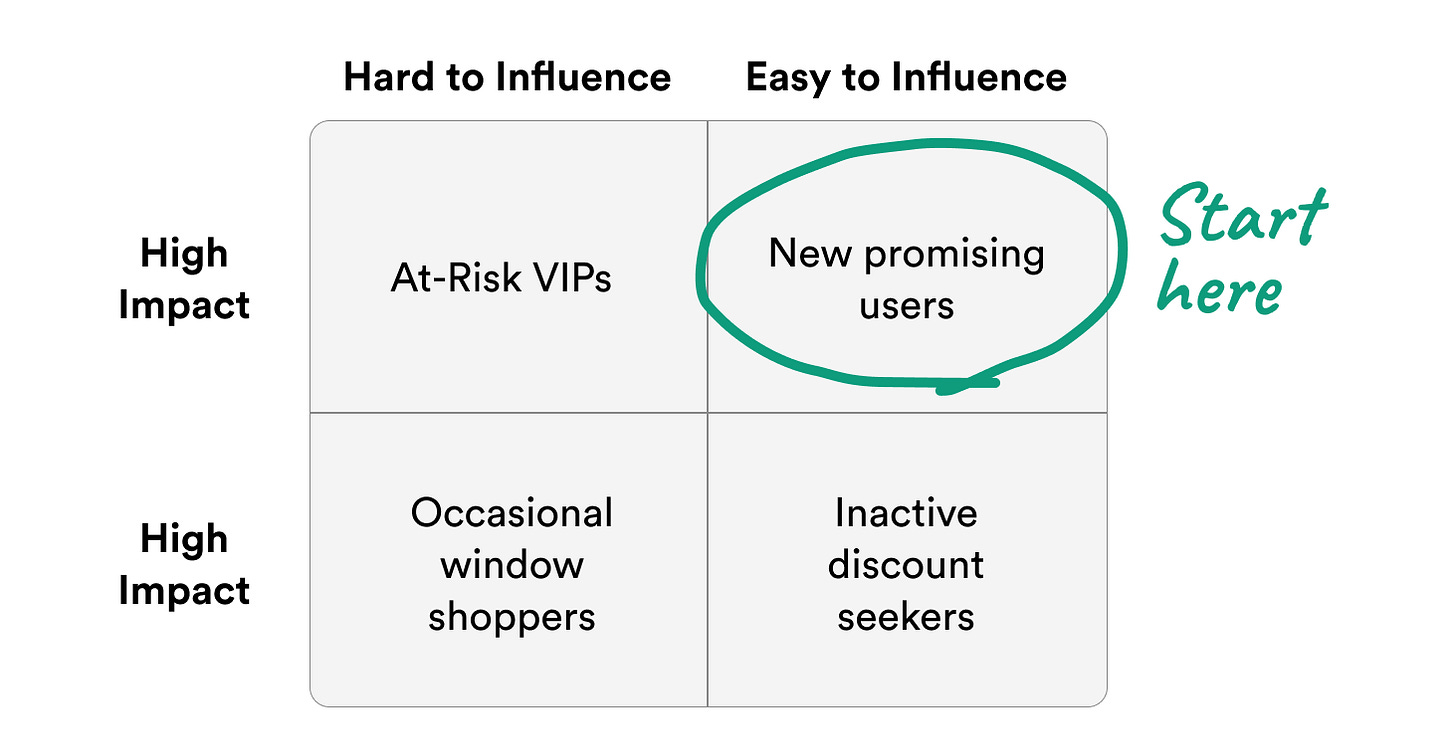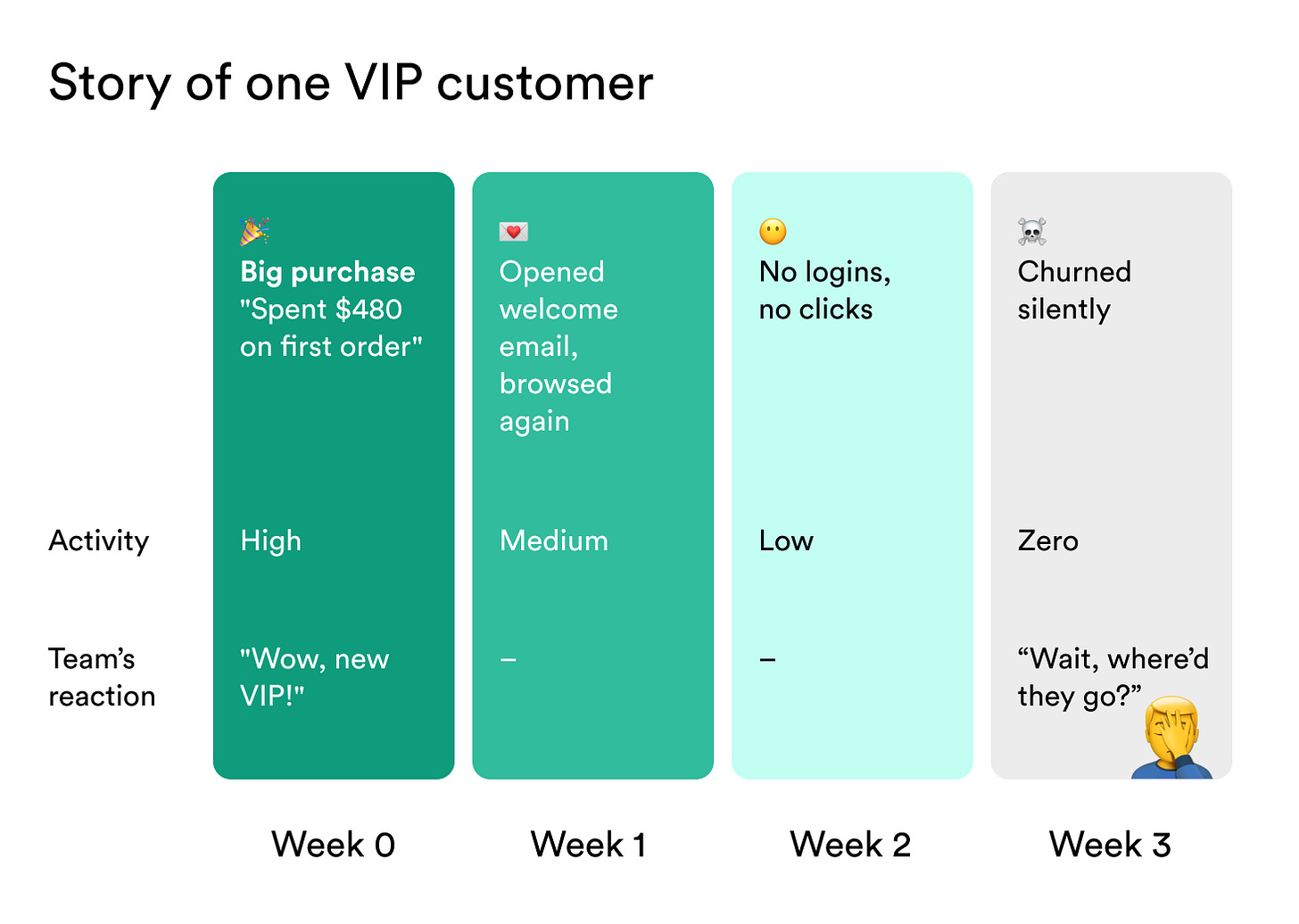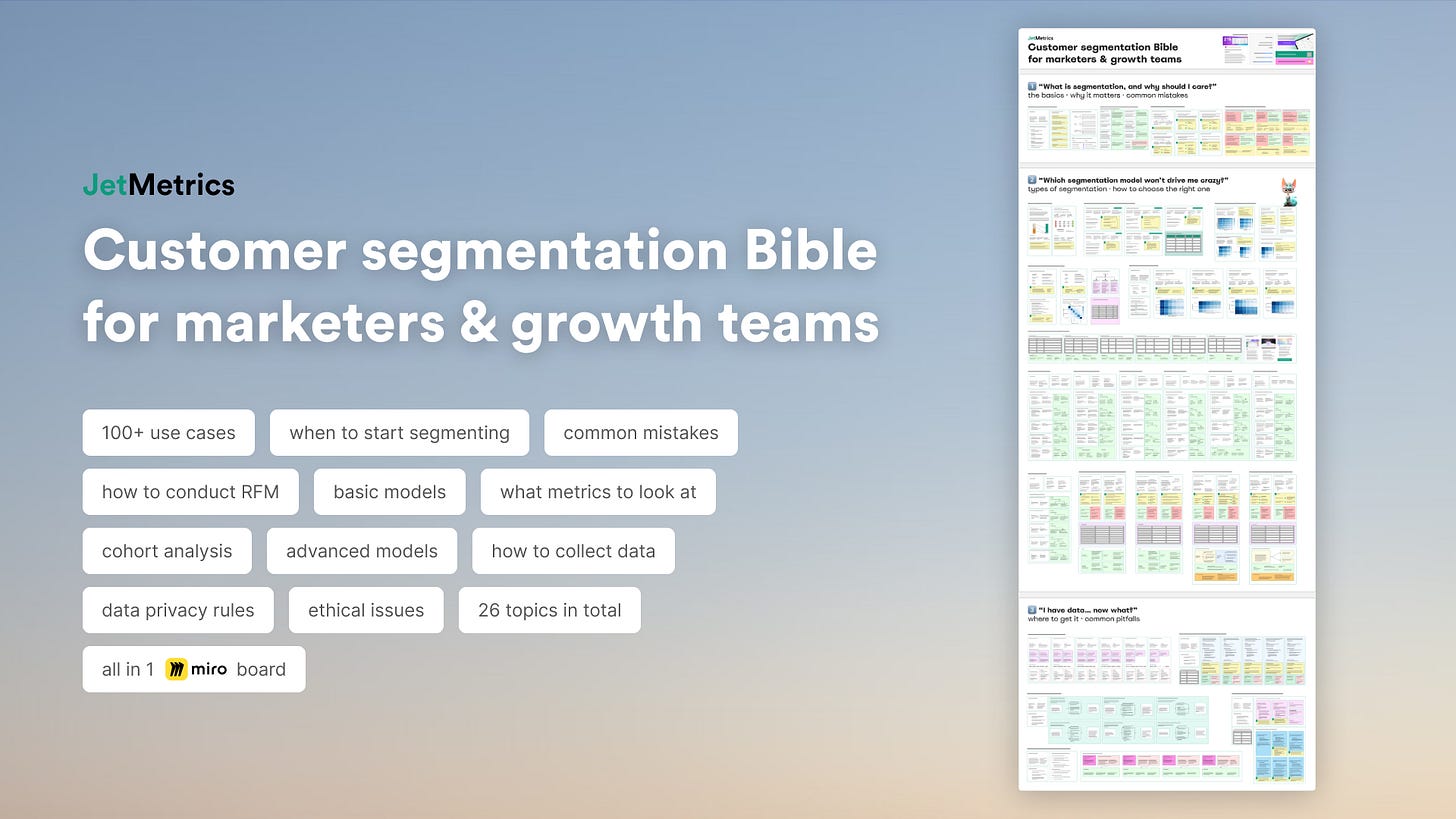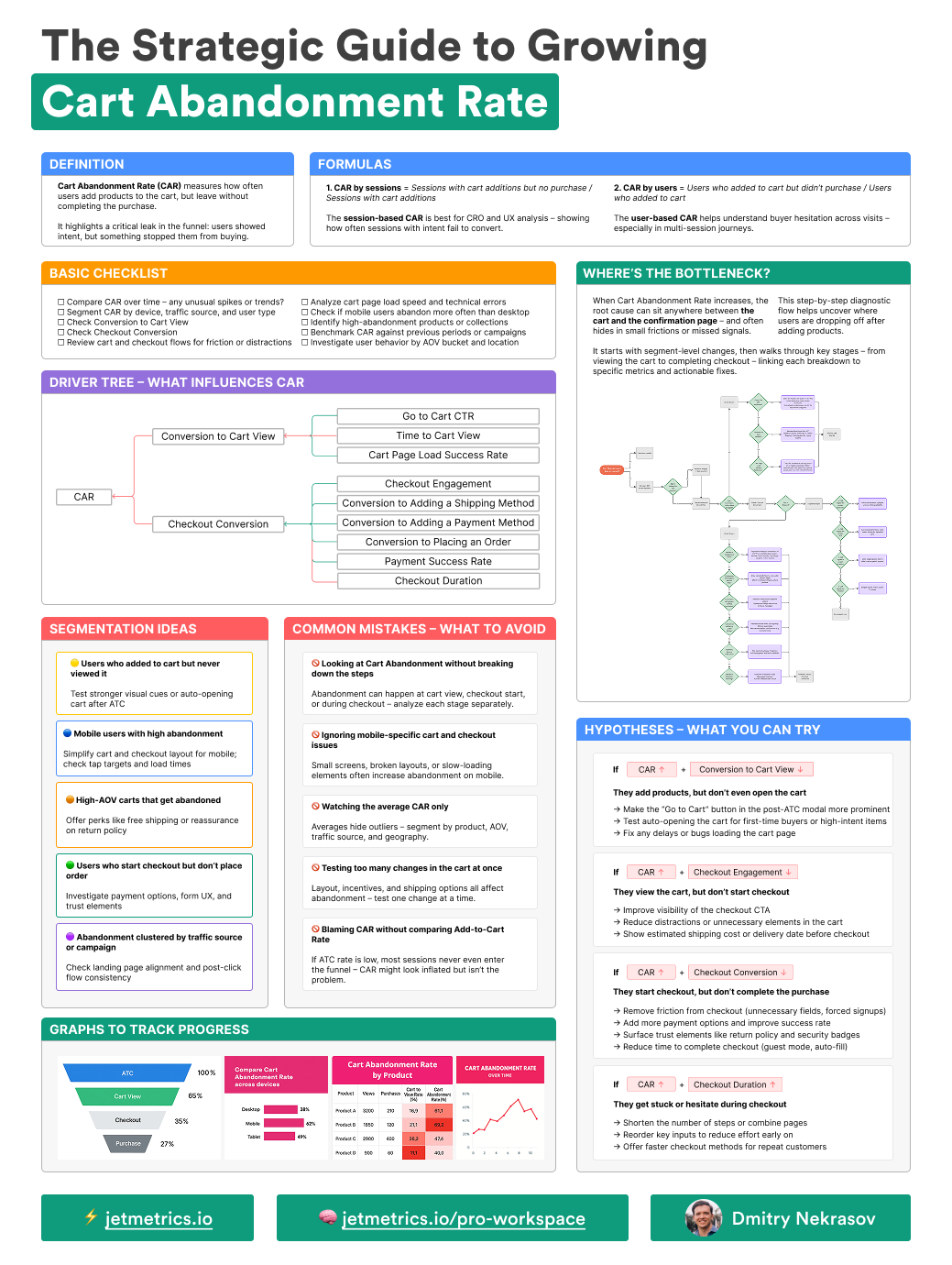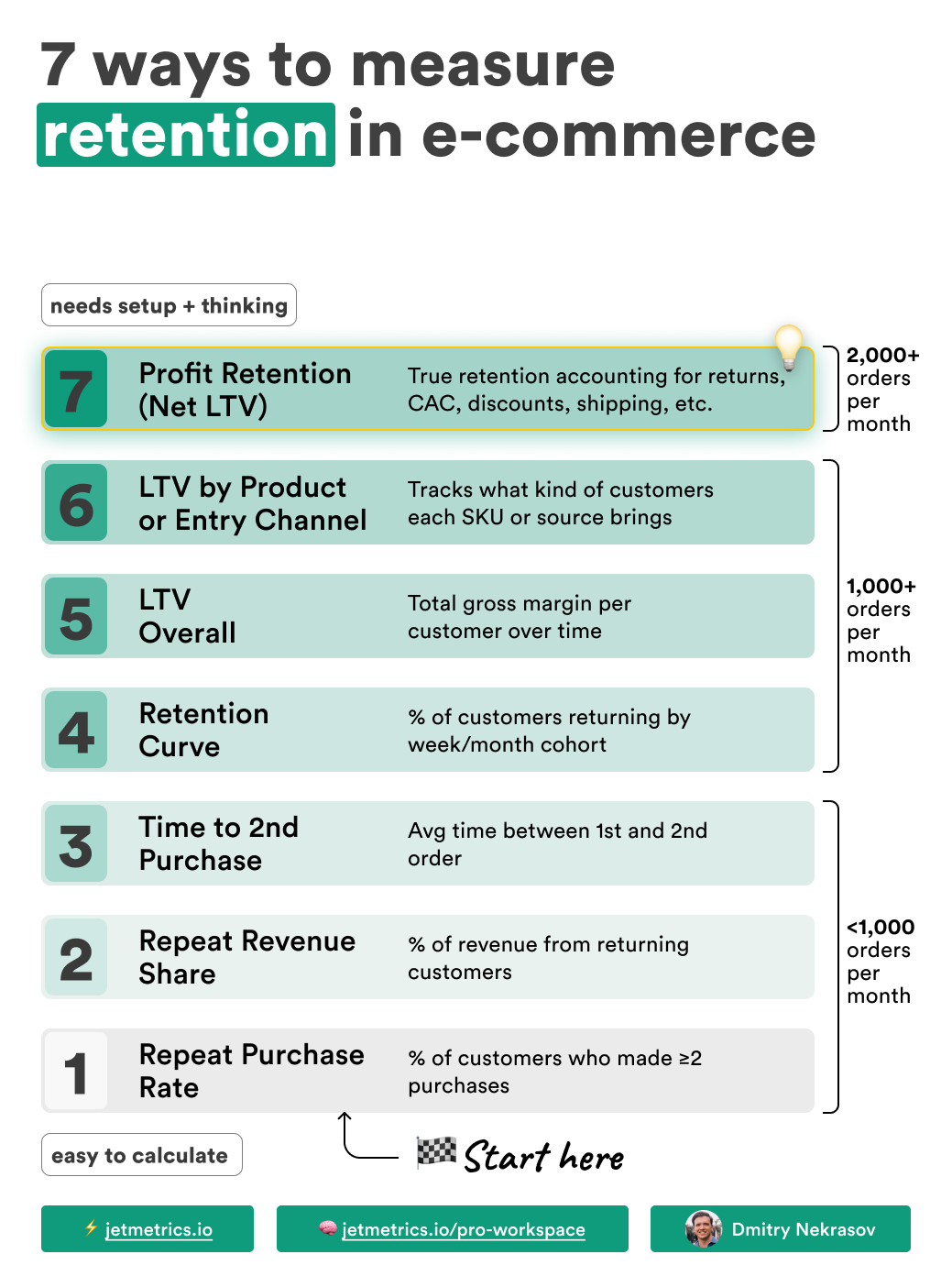Table of contents:
JetMetrics App update
Article
Guide of the week
Post of the week
JetMetrics App weekly update
We’ve just added automatic currency display in JetMetrics – pulled directly from your Shopify store settings.
No more guessing what “125.8” means. Now every AOV or sales number shows up with the correct currency label (USD, EUR, etc.).
Small touch, but it makes your reports clearer, especially when sharing with clients or teammates.
More important updates are coming.
Check this out – https://jetmetrics.io/roadmap
JetMetrics is currently in a closed beta. Book a 1:1 demo to connect Shopify store.
Why 90% of customer segments don’t make money
You have segments. But do they actually do anything?
Segmentation sounds like a smart move.
You group users into buckets, give each a nice label, maybe even color-code them in a dashboard.
But here’s the harsh truth:
🥵 Most customer segments are useless.
Either they never get used or they don’t change anything.
They look good in a report, but they don’t drive different messages, offers, or decisions. And that means: no impact on revenue.
This mini-article will break down:
Why most segmentation efforts fail
How to fix them
And how to build segments that actually drive results
Let’s go.
So… why segment at all?
Because not all customers are equal.
Some will buy once and disappear. Some come back every week.
Some need discounts. Others don’t care.
Segmentation is about treating different people differently – on purpose.
Done right, it lets you:
Spot who’s about to churn
Focus on high-LTV users
Stop wasting budget on people who won’t convert
Done wrong, it’s just a spreadsheet exercise.
5 reasons your segments don’t work
Let’s be honest. Most segmentation looks great in theory, but falls apart in practice.
Here’s why.
1. Too broad or too narrow
“Men aged 25–34” sounds focused. But some are broke students, others are CFOs.
Same age, wildly different value.
Too narrow? Like “Users from Boston who bought once in March”, and now you have 11 people.
Start broad (e.g. one-time vs. repeat buyers), then zoom in only if behavior differs.
2. No action linked to the segment
You made a segment of people who clicked your email. So what?
If nothing changes – no message, no offer, no timing – it’s just decoration.
Every segment should exist for a reason: “I want to treat this group differently because…”
3. Ignoring behavior
Still segmenting only by demographics?
That’s like trying to understand a movie by looking at the actors’ birthdays.
Behavior (visits, purchases, drop-offs) shows intent. Use it.
4. Same treatment for everyone
The worst offense: doing all the work to segment users…
Then, sending the exact same thing to all of them.
Even a different subject line or CTA per group is a start.
5. No measurement
You created a segment. Did it perform better?
Worse? The same?
Most teams never check.
Track basic metrics per segment: CR, LTV, churn. No impact = rethink the logic.
How to create segments that actually work
Enough with the mistakes.
Let’s discuss how to do segmentation right and make it pay off.
Step 1. Start with the goal
Most teams start with data or just curiosity.
Better to start with a question:
“What are we trying to improve?”
– Reduce churn?
– Boost repeat purchases?
– Upsell VIPs?
If your segment doesn’t serve a goal, don’t build it.
Step 2. Think in 3 criteria:
Impact – Will improving this group move revenue?
Influence – Can we realistically shift their behavior?
Ease – Do we have the tools to act on it?
Example: First-time buyers who didn’t return in 30 days = high potential, easy to target.
Step 3. Go macro → then micro
Don’t start with 28 segments. Start with 3.
First split: one-time vs. repeat buyers.
Then: repeat → VIP vs. discount-sensitive.
Then: discount-sensitive → churn risk or not.
☝️ Each layer only matters if your actions change.
Step 4. Build with measurement in mind
Ask this before launching:
How will we know if this segment is working?
What metric are we trying to move?
You don’t need full BI. Even tracking CR or LTV per segment is a start.
3 high-impact segments you can use tomorrow
Let’s keep it practical.
Here are 3 segments that consistently deliver results: in e-commerce, SaaS, and beyond.
Segment 1. Champions vs. At-Risk (RFM-style)
Split users by:
How recently they bought
How often they buy
How much they spend
Champions → Give early access, loyalty perks, upsells
At-Risk → Send re-engagement flows, personalized offers
💡 These segments almost always show big gaps in behavior and big impact when treated differently.
Segment 2. Cart Abandoners
They added something to cart but didn’t buy.
That’s intent and a clear opportunity.
Implement trigger reminders, time-limited offers, or social proof.
💡 Even a single email can recover serious revenue from this group.
3. High LTV, declining activity
Some of your best customers may be quietly fading.
Segment users who’ve spent a lot but haven’t returned in 30+ days.
Send them a message that acknowledges their value and invites them back.
💡 Most teams forget to treat high spenders like VIPs before they leave.
Final Thoughts
Segmentation isn’t about slicing data for fun.
It’s about making different decisions for different people, at the right time.
So before you build your next segment, ask:
What’s the goal?
Will we treat this group differently?
Can we measure the outcome?
If the answer is yes to all 3, congrats.
You’re in the 10% that makes segmentation work.
For more insights, explore our huge Customer Segmentation Bible in Miro
Guide of the week
This guide is a part of our next big thing – JetMetrics Workspace
LinkedIn post of the week
Happy analyzing 🫶
See you next week!
Dmitry from JetMetrics



